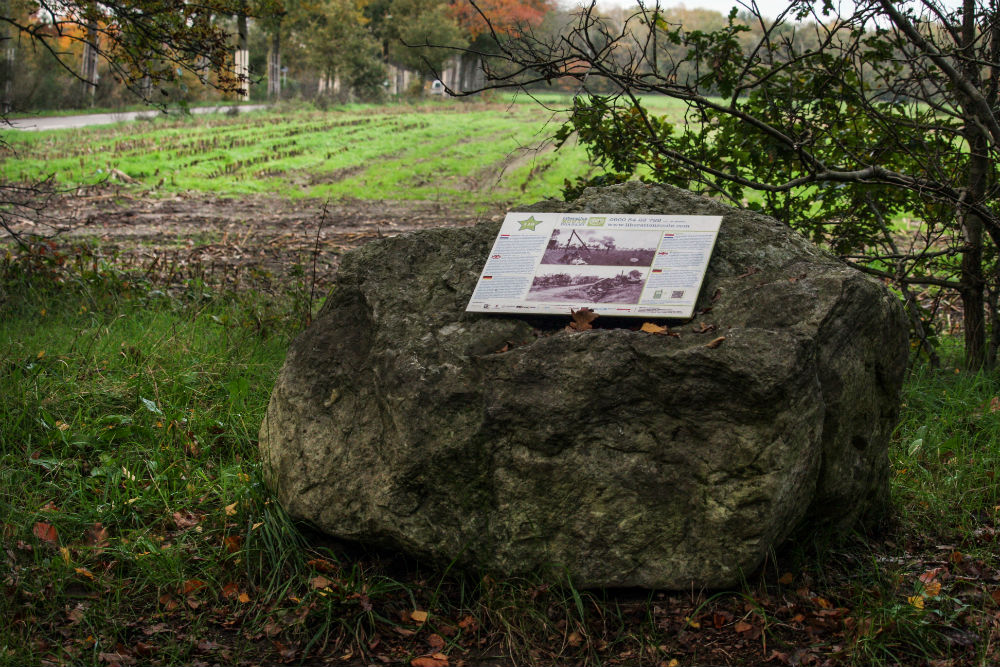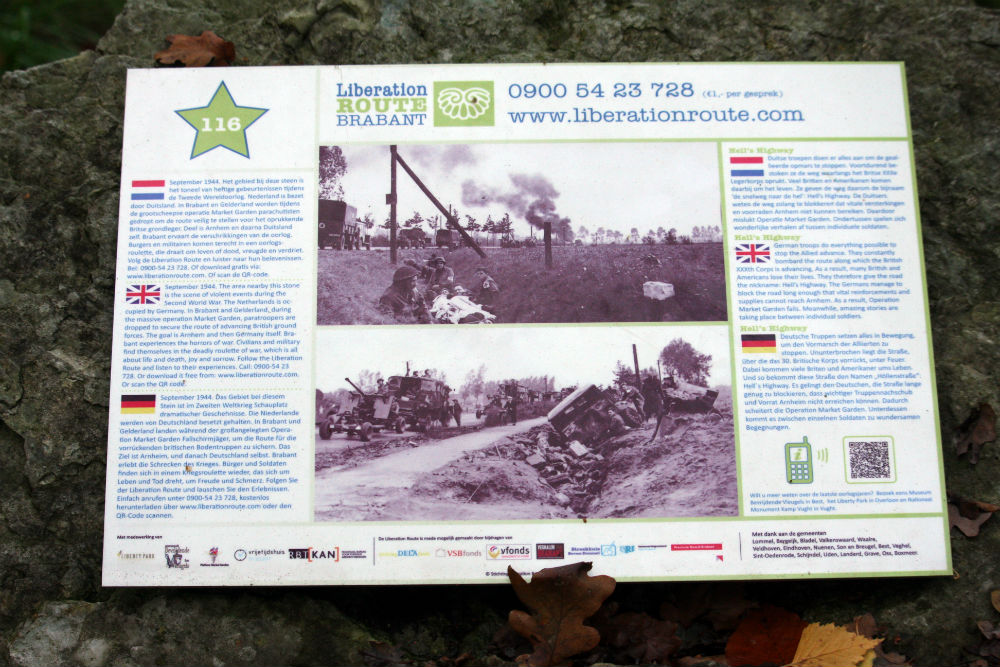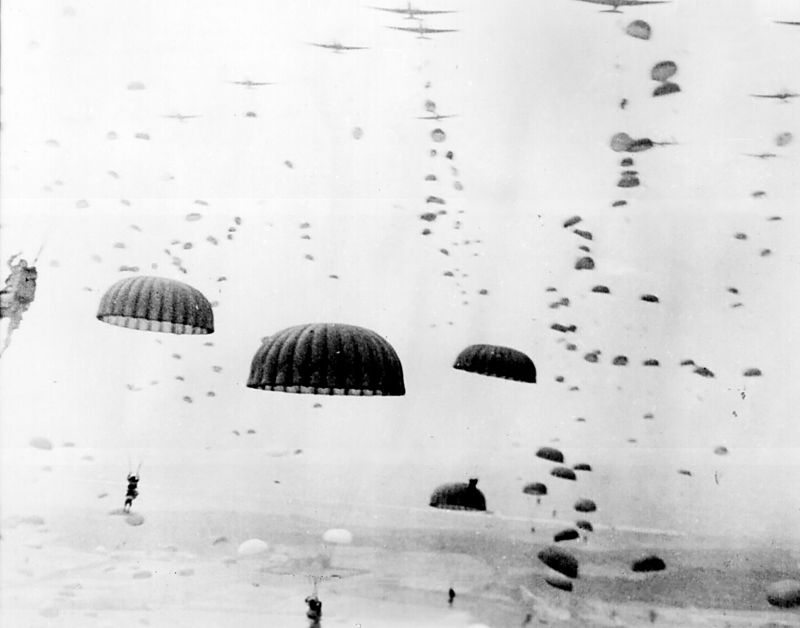Liberation Route Marker 116: Hell's Highway
Hell's Highway
On their route north towards Nijmegen and Arnhem the ground troops of Operation Market Garden had to deal with fierce opposition and frequent counterattacks. For days a bloody battle raged in the low hills near St. Oedenrode, causing serious delays. As a result, vital reinforcements couldn’t reach the Arnhem bridge in time and Operation Market Garden failed.
The advance of the British 30th Corps to secure the bridges captured by U.S. Airborne forces, met with fierce German resistance. The 30th Corps, commanded by Lieutenant-General Brian Horrocks, launched its attack on the morning of 17 September from a small bridgehead across the Maas-Schelde Canal, just inside of Belgium. Initially all went well. The first objective was to relieve the airborne forces near Eindhoven on the evening of day one. The Airborne forces in Arnhem, which were the furthest away, were supposed to be relieved within four days at the latest. This ambitious time schedule could not be carried out. The village of St. Oedenrode was the scene of ferocious counterattacks by German forces in their efforts to cut the Allied corridor north to Nijmegen and Arnhem. For days the bridge over the river Dommel was the focus of these counterattacks.
Between 24 and 26 September 1944 a bloody battle raged in the low hills around Koevering and Eerde, two hamlets near St. Oedenrode. The German Jungwirth Battalion succeeded in cutting off the road here and managed to halt the Allied advance for almost 40 hours. As a result, vital supplies and reinforcements remained stuck in the Brabant area. The road was finally recaptured and cleared on 26 September. On that same day, the British decided to evacuate their troops from Oosterbeek near Arnhem. The bold plan to push on to northern Germany via the Dutch river bridges could not be carried out. Operation Market Garden had failed.
Audiospot - Hell's Highway
Liberation Route Europe is a certified Cultural Route of the Council of Europe. With hundreds of sites and stories in nine European countries, the route links the main regions along the advance of the Allied Forces in 1943-1945.
The entire route consists of themed routes that can be travelled by by hiking, walking, cycling and car. These routes pass numerous historical and interesting sites and tell stories from a multitude of perspectives that were important in the final phase of World War II.
Many routes feature listening spots, offering the opportunity to listen to a historical story at a location. In addition, many ‘Vectors of Memory’ have been placed, indicating that the passer-by is on one of the Liberation Routes.
The routes can be found on the Liberation Route Europe website or in the app through which many stories can also be listened to.
Do you have more information about this location? Inform us!
Source
- Text: TracesOfWar & Liberation Route Europe
- Photos: Liesbeth van Diggele
Related books
Nearby
Museum
Point of interest
- Landing Site Donald O. Mills, Eerde - Veghel (nabij Eerde)
- Operatie Market Garden Dropzone A - Schijndel
- Captain Fred A. Hancock Bridge - Sint-Oedenrode
Monument
- Newman Memorial - Veghel
- Vector of Memory: Vlagheide - Schijndel
- Memorial US Paratrooper Eerde - Eerde
Cemetery
- Commonwealth War Graves Roman Catholic Cemetery Eerde - Eerde
- Dutch War Graves Zijtaart - Zijtaart
- Commonwealth War Graves Roman Catholic Churchyard Sint-Oedenrode - Sint-Oedenrode
Remembrance Stone
- Stumbling Stones Ncb-Laan 6 - Veghel
- Stumbling Stones Hoofdstraat 21 - Veghel
- Stumbling Stones Hoofdstraat 65 - Veghel





























